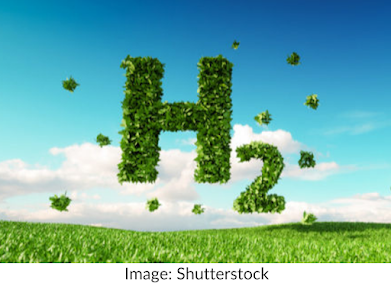Hydrogel and the Environment
When I was younger, I enjoyed playing with these swelled-up jelly orbs known as "Orbeez." My favorite part was leaving the tiny balls in water and coming back later to see just how massively they swelled up. How could such a small area absorb so much water that it grows to be ten times larger? Well, "Orbeez" are made of a fascinating material called hydrogel. A hydrogel can absorb such large amounts of water due to its cross-linked polymer chains that contain hydrophilic material. Some hydrogels can even absorb up to 500 times their original weight! Though they are fun to play with, hydrogels have a wide range of applications in medical, industrial, and environmental/agricultural fields.
The use of hydrogels can reduce erosion and improve water infiltration into fine-textured agricultural soils. These fine-textured soils are prone to increase, unwanted erosion from irrigation water. When it comes into contact with water, the hydrogel dissolves, leaving behind a thin layered surface atop the soil. The slimy hydrogel layer ensures that the soil is stabilized and does not wash away while still allowing the irrigation water to seep in and hydrate it. Hydrogels enable the soil to store more water and thus remain moist, saving water, which is highly beneficial during a drought. In addition, they can decrease the state in which the plant is growing in unfavorable conditions, therefore improving the plan's quality and growth speed.
While synthetic hydrogels are currently favored due to their improved functionality, environmental pollution, and greater resource scarcity, have motivated many researchers to look towards naturally derived hydrogels. Found in plants, cellulose is the most abundant natural polymer on the planet, so why not take advantage of it! It is tasteless, odorless, and hydrophilic. Cellulose-based hydrogels have become a promising solution due to their positive environmental aspects like biocompatibility, biodegradability, and non-toxicity. Not only are they environmentally beneficial, but according to researchers, "...these polymers feature many amazing properties such as responsiveness to pH, time, temperature, chemical species and biological conditions besides a very high-water absorption capacity."
 |
Overall, on top of their ample water-absorbing capacity, hydrogels hold various remarkable and advantageous properties. These properties make it highly versatile, with applications of hydrogels spanning across a vast array of fields. In agriculture, hydrogels help save water and prevent erosion. Environmental concerns have sparked the rise of naturally derived hydrogels, even from food byproducts. As researchers are becoming more and more knowledgeable about hydrogel, especially natural hydrogels, its applications continue to expand to new areas.
Sources:
https://www.azocleantech.com/article.aspx?ArticleID=373
https://www.nature.com/articles/s41598-019-54638-5#Sec15
https://www.ncbi.nlm.nih.gov/pmc/articles/PMC6173681/#CR104
https://www.sciencedirect.com/science/article/pii/S2238785420320895
https://www.azocleantech.com/article.aspx?ArticleID=373
https://www.nature.com/articles/s41598-019-54638-5#Sec15
https://www.ncbi.nlm.nih.gov/pmc/articles/PMC6173681/#CR104
https://www.sciencedirect.com/science/article/pii/S2238785420320895
Image Credits (in order):
https://www.moms.com/orbeez-balls-kid-toys-explained/
https://www.iffcoandkisan.com/post/importance-of-hydrogel-and-its-applications
https://ologyjournals.com/aaeoa/aaeoa_00011.php
https://www.socochem.com/
https://www.thoughtco.com/what-is-cellulose-definition-4777807
https://onlinelibrary.wiley.com/doi/abs/10.1002/pat.1616
https://www.nature.com/articles/s41598-019-54638-5
https://www.moms.com/orbeez-balls-kid-toys-explained/
https://www.iffcoandkisan.com/post/importance-of-hydrogel-and-its-applications
https://ologyjournals.com/aaeoa/aaeoa_00011.php
https://www.socochem.com/
https://www.thoughtco.com/what-is-cellulose-definition-4777807
https://onlinelibrary.wiley.com/doi/abs/10.1002/pat.1616
https://www.nature.com/articles/s41598-019-54638-5






Comments
Post a Comment